Inductive Reasoning Versus Deductive Reasoning
Master inductive and deductive reasoning to enhance critical thinking in school and workplace settings. Elevate decision-making skills.


Inductive and deductive reasoning are the pillars of logical thought, essential in the critical thinking toolkit that teachers impart to their students. Understanding the nuances of these two forms of reasoning is pivotal in nurturing students' analytical capabilities.
| Aspect | Inductive Reasoning | Deductive Reasoning |
|---|---|---|
| Definition | A bottom-up approach that starts with specific instances and builds toward broader generalizations | A top-down approach that begins with general theories or premises and moves toward specific conclusions |
| Key Feature | Builds arguments piece by piece from observations, focusing on pattern recognition and probability | Provides certainty in conclusions through systematic, structured logical reasoning |
| Example | Observing multiple instances of plants growing toward light and concluding that plants need sunlight | Starting with the premise of traveling to a specific city and deducing the best transportation method |
| Classroom Use | Encourages students to spot patterns, form hypotheses, and engage in scientific exploration | Teaches students to evaluate hypothesis validity and understand sound argument structures |
| Best For | Tackling unfamiliar problems, creative exploration, and real-world application of learning | Verification of theories, formal inquiry, and situations requiring certain conclusions |
Inductive reasoning, a bottom-up approach, invites learners to start with specific instances and ascend to broader generalizations. It's a process where the inductive argument is built piece by piece from observations, culminating in a hypothesis. This inductive logic sparks curiosity, propelling students to discern patterns and engage in the scientific method with vigor.
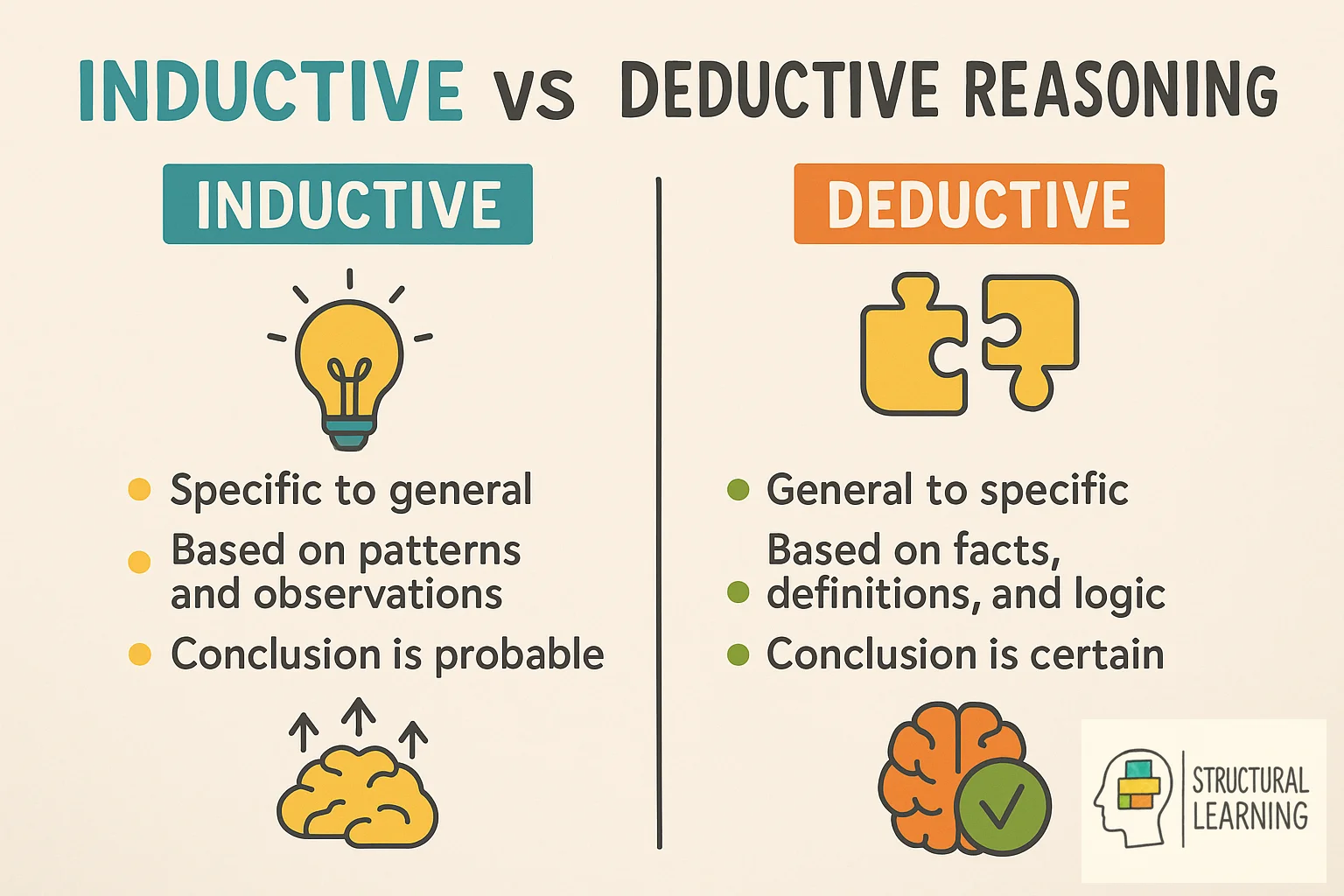
Contrastingly, deductive reasoning adopts a top-down approach. Here, the argument in question begins with a widely accepted theory or premise, marching steadfastly towards individual, specific conclusions, forming a deductive argument. This form of reasoning teaches students to evaluate the validity of a hypothesis by empirical observation, sharpening their scientific reasoning and understanding of valid argument structures.
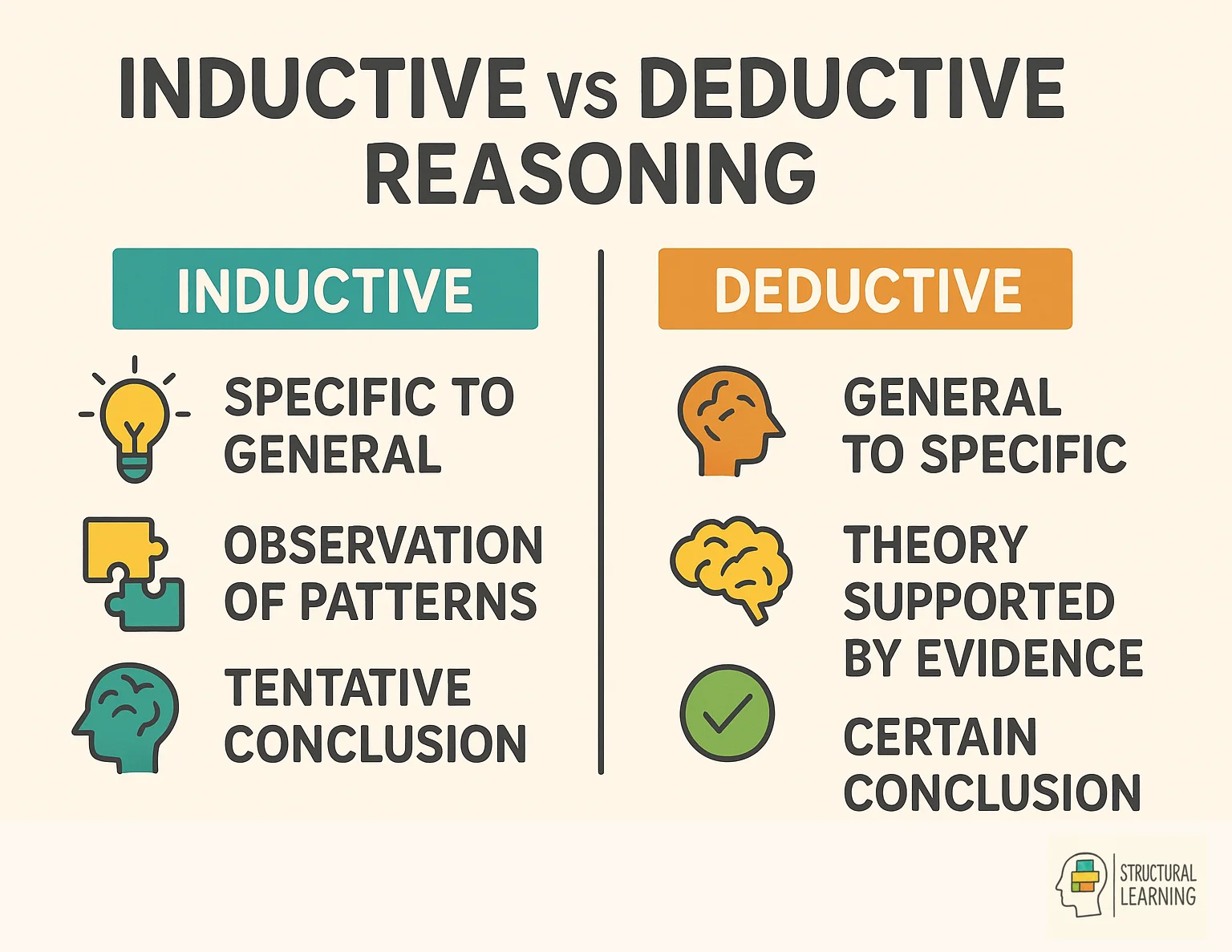
In daily classroom practice and everyday life, these methods interlace to form a robust framework for discovery and verification. While inductive arguments empower students with the creative freedom to explore and theorize, deductive arguments refine their thought processes, ensuring that their conclusions are sound or revealing the flaws in unsound or invalid arguments.
Introducing students to both approaches equips them with a comprehensive view of problem-solving and decision-making, enriching their educational journey with the rigors of formal and empirical inquiry.
Deductive reasoning is a top-down logical process that starts with a general theory or premise and moves to specific conclusions. It guarantees certainty when the initial premises are true, making it ideal for mathematical proofs and scientific hypothesis testing. Teachers use deductive reasoning when applying established rules or formulas to solve specific problems.

The concept of the Deductive Approach plays a crucial role in providing certainty in conclusions. Deduction involves reasoning from general or universal premises to reach specific conclusions. It is often used in everyday scenarios, such as trip planning, where we start with certain premises, such as knowing the destination and the available means of transportation, and then use deductive reasoning to determine the best route or mode of travel.
The Deductive Approach relies on the principles of logic and aims to ensure that the conclusion follows logically from the given premises. This approach provides certainty in conclusions because it involves a systematic and structured process of reasoning. When we use deduction, we start with premises that are known or assumed to be true, and then use logical reasoning to draw conclusions that are necessarily true if the premises are true.
For example, when planning a trip, we may have the premise that our destination is a specific city. We also know the available means of transportation, such as a car or a train. By using deductive reasoning, we can conclude that if we choose to travel by car, we will need to consider factors such as fuel costs, driving distance, and travel time. On the other hand, if we choose to travel by train, we may need to consider factors such as ticket availability, departure and arrival times, and the convenience of the station locations. The deductive approach allows us to reach these conclusions with certainty because they logically follow from the given premises and the principles of logic.
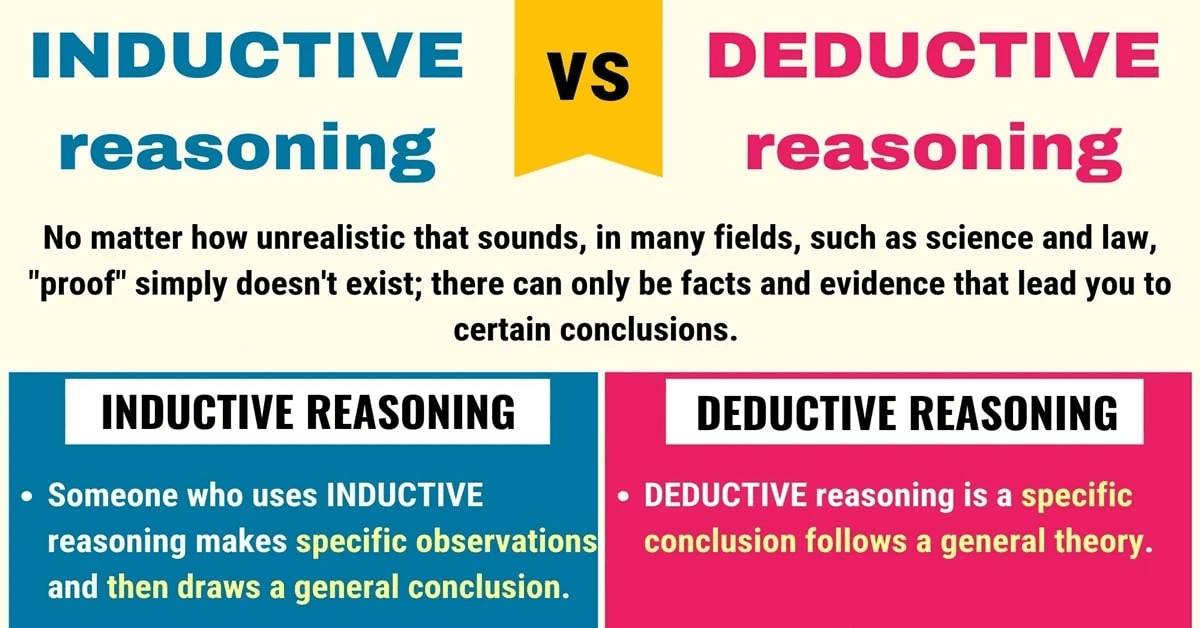
Common classroom examples include mathematical proofs (all triangles have 180 degrees, therefore this specific triangle has 180 degrees), scientific laws (all metals conduct electricity, copper is a metal, therefore copper conducts electricity), and grammar rules (all sentences need a subject and verb, this is a sentence, therefore it needs a subject and verb). These examples help students understand how general rules apply to specific cases. Teachers can use these patterns to demonstrate logical thinking across all subject areas.
Deductive reasoning is a logical process used to draw conclusions based on established premises and relationships. It always follows from general or universal premises, and there are three types of deductive reasoning based on the premise and relationships. To illustrate this, let's consider three examples of deductive reasoning.
Example 1: All birds have feathers. A penguin is a bird. Therefore, a penguin has feathers. In this example, the premise is that all birds have feathers, which is a general statement based on observations and knowledge. The relationship is that a penguin is classified as a bird. By applying deductive reasoning, we can conclude that a penguin has feathers because it falls under the category of birds, which are known to have feathers.
Example 2: All mammals have hair. A dog is a mammal. Therefore, a dog has hair. Here, the premise is that all mammals have hair, which is a universal statement. The relationship is that a dog is categorized as a mammal. By employing deductive reasoning, we can infer that a dog has hair because it is a mammal, and all mammals possess hair.
Example 3: All liquids evaporate at boiling point. Water is a liquid. Therefore, water will evaporate at its boiling point. In this instance, the premise states that all liquids evaporate at their boiling points, which is a general observation. The relationship is that water is classified as a liquid. Using deductive reasoning, we can deduce that water will evaporate at its boiling point because it is a liquid and all liquids follow this pattern.
In summary, deductive reasoning provides a rational way to draw conclusions based on premises and relationships. By following the logical structure of deductive reasoning, we can confidently make inferences and reach valid conclusions. These examples highlight the importance of understanding the premise and relationships when engaging in deductive reasoning.
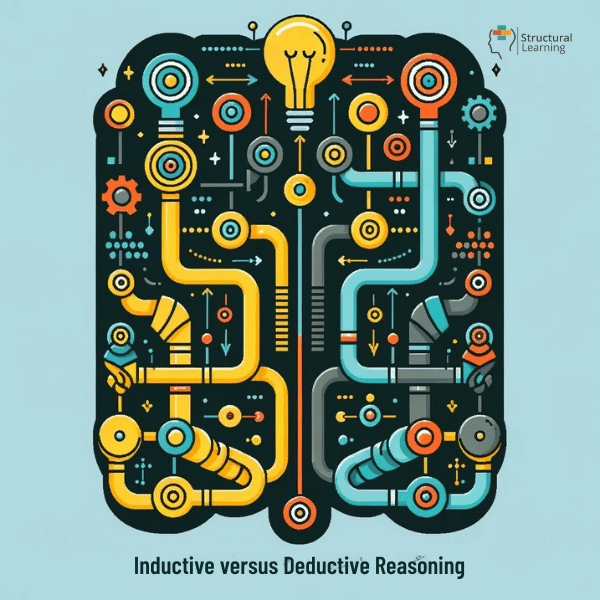
Inductive reasoning works bottom-up, starting with specific observations to form general conclusions or theories based on patterns and probabilities. Unlike deductive reasoning's certainty, inductive conclusions are probable but not guaranteed, making it essential for scientific discovery and pattern recognition. Students use inductive reasoning when conducting experiments, analyzing data trends, or forming hypotheses from observations.
Inductive inquiry is another valuable approach that teachers can use to stimulate critical thinking and problem-solving in their students. It involves the examination of probabilities and patterns as a means of drawing conclusions and making generalizations.
By observing patterns in data or events, students are able to identify trends and relationships, allowing them to formulate theories or hypotheses. It is important to note, however, that inductive reasoning is not infallible, as generalizations made based on observed patterns may not always hold true. This is because the conclusions drawn from inductive reasoning are based on probabilities rather than certainties. Just because a pattern has been observed several times does not mean that it will continue to hold true in all instances.
Nevertheless, inductive reasoning is a valuable tool for establishing probability. Students learn to analyze and interpret data, make predictions based on observed patterns, and assess the likelihood of certain outcomes. This helps them to develop important critical thinking skills and become more comfortable with uncertainty and ambiguity.
By actively engaging in the process of inductive inquiry, students become active participants in their own learning, and are encouraged to question, reflect, and explore ideas in a systematic and logical manner. As teachers, it is important to support and guide students through the process, encouraging them to justify their reasoning and test their generalizations against new data or evidence.
In this way, we can foster a culture of inquiry and curiosity in our classrooms, enabling students to develop their own theories, draw conclusions, and build knowledge through their observations and experiences.
Students use inductive reasoning when observing that the sun rises every morning to conclude it will rise tomorrow, noticing that mixing blue and yellow paint repeatedly creates green to form a color theory, or surveying classmates' favorite foods to make generalizations about lunch preferences. These examples show how specific observations lead to broader conclusions. Teachers can encourage this thinking through science experiments, data collection activities, and pattern recognition exercises.
As we have seen, Inductive reasoning is a method where conclusions are drawn from observations, each serving as a minor premise contributing to a major premise. In contrast to deductive reasoning, which seeks to confirm a theory, inductive reasoning moves toward the creation of theories, often beginning with specifics and moving to generalizations.
This process is integral to everyday life, allowing us to make informed decisions based on patterns we observe. Here are three examples that illustrate how inductive reasoning is applied in various scenarios.
In each of these examples, the inductive argument starts with observed data points or minor premises to construct a probable, if not certain, major premise. By recognizing patterns and constructing verbal arguments rooted in logic, we can apply inductive reasoning to generate hypotheses, foster understanding, and innovate within various fields. This method embraces the reality that while a single argument may not be conclusive, it can lead us to powerful insights when viewed collectively.

Start by having students collect specific observations or data points, then guide them to identify patterns or similarities among these observations. Next, help students form a general hypothesis or theory based on the patterns, and finally test this theory with new examples. This framework mirrors the scientific method and builds critical thinking skills through hands-on discovery.
Inductive reasoning transforms observation into knowledge, a process crucial in educational settings. As teachers, guiding students through this framework not only enhances their learning but also empowers them with critical thinking skills. Here’s a simple, step-by-step method to teach inductive reasoning in the classroom.
By leading students through these steps, you'll help them to develop a robust understanding of inductive reasoning. This methodical approach to learning encourages them to think critically, observe carefully, and base their conclusions on solid evidence, which are vital skills in any field of study.

The seven essential principles include modeling both reasoning types explicitly, providing varied practice opportunities, encouraging students to explain their thinking process, using real-world examples, creating safe spaces for hypothesis testing, teaching pattern recognition skills, and regularly assessing reasoning development. These principles work together to build strong logical thinking abilities. Implementation should be gradual and consistent across all subject areas.
Developing reasoning skills in the classroom is of utmost importance for the students' overall learning experience. By establishing and implementing the 7 Principles of Developing Reasoning, teachers can effectively nurture critical thinking and problem-solving abilities in their students.
1. First and foremost, these principles emphasize the significance of providing students with opportunities to think independently and critically. This involves encouraging them to question assumptions, analyze evidence, and evaluate arguments. By promoting these skills, students are better equipped to engage in thoughtful discussions and make informed decisions.
2. The second principle revolves around the importance of fostering a supportive and inclusive classroom atmosphere. Creating a safe space where students feel comfortable expressing their thoughts and ideas allows for open-minded dialogue and collaboration. Through this principle, teachers can cultivate an environment that values diverse perspectives and encourages students to consider alternative viewpoints.
3. The third principle highlights the necessity of scaffolding and incremental learning. It is essential to provide students with structured support and guidance as they develop their reasoning skills. This can be achieved through gradual release of responsibility where teachers gradually release control to students, allowing them to take ownership of their learning.
4. Another crucial principle is the incorporation of real-world examples and authentic tasks. By connecting abstract concepts to practical applications, students can develop a deeper understanding of the material and its relevance in their lives. This principle encourages teachers to provide students with opportunities to apply their reasoning skills in authentic contexts, fostering a sense of purpose and engagement.
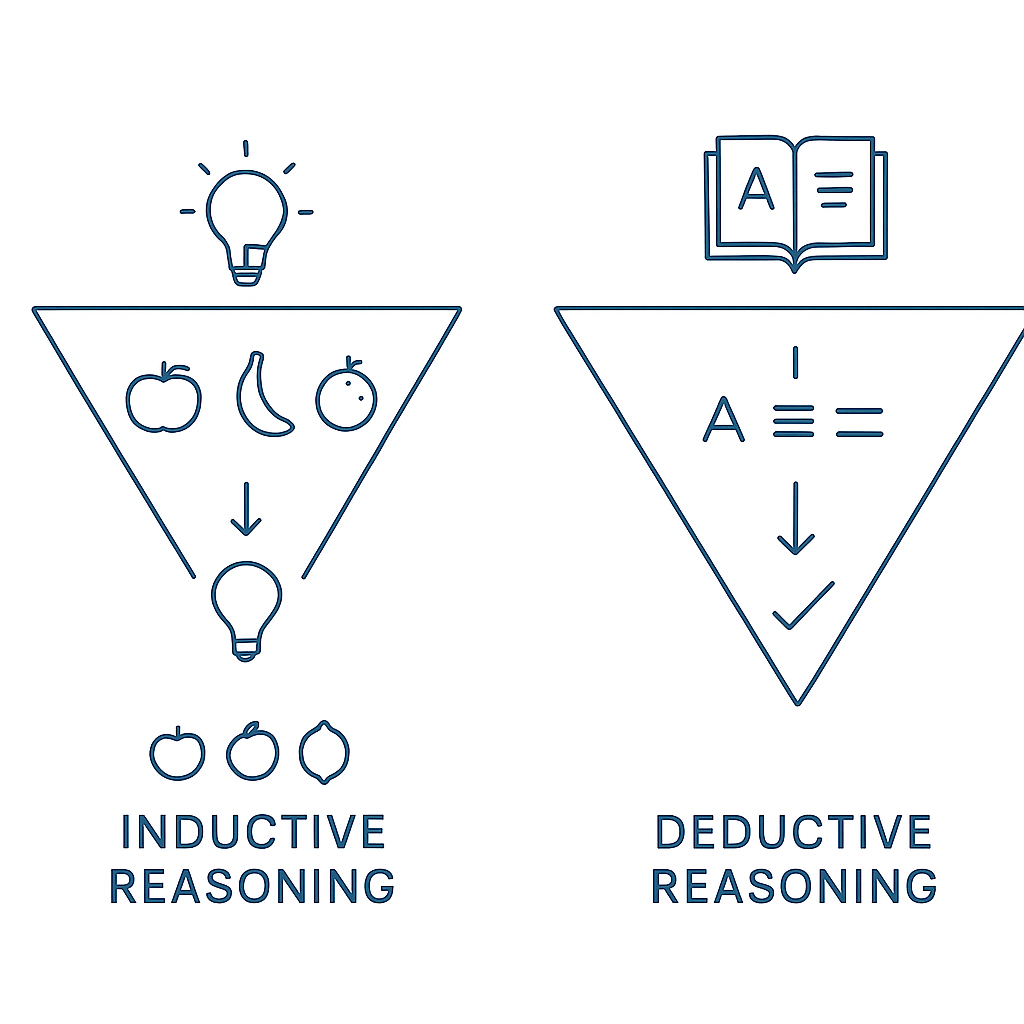
5. The fifth principle focuses on promoting metacognition and reflection. Teachers should encourage students to think about their own thinking processes, allowing them to monitor their progress and identify areas for improvement. By fostering metacognitive skills, students can enhance their ability to reason effectively and become self-directed learners.
6. The sixth principle is centered around formative assessment and feedback. Regularly assessing students' progress through low-stakes assessments helps teachers to identify areas where students may be struggling and provide targeted support. Additionally, providing timely and constructive feedback allows students to reflect on their reasoning and make necessary adjustments, ultimately improving their overall learning experience.
7. The final principle emphasizes the importance of collaboration and peer interaction. By engaging in meaningful group work, students have the opportunity to learn from and with their peers. Collaborative activities encourage students to articulate their reasoning, strengthen their arguments, and consider alternative viewpoints, promoting a deeper understanding of the material.
By implementing these principles, teachers can create an inclusive and supportive environment where students feel empowered to think independently, reflect on their reasoning, and engage in meaningful discussions. Developing reasoning skills not only benefits students in their current academic pursuits but also equips them with essential lifelong skills for success in various contexts.
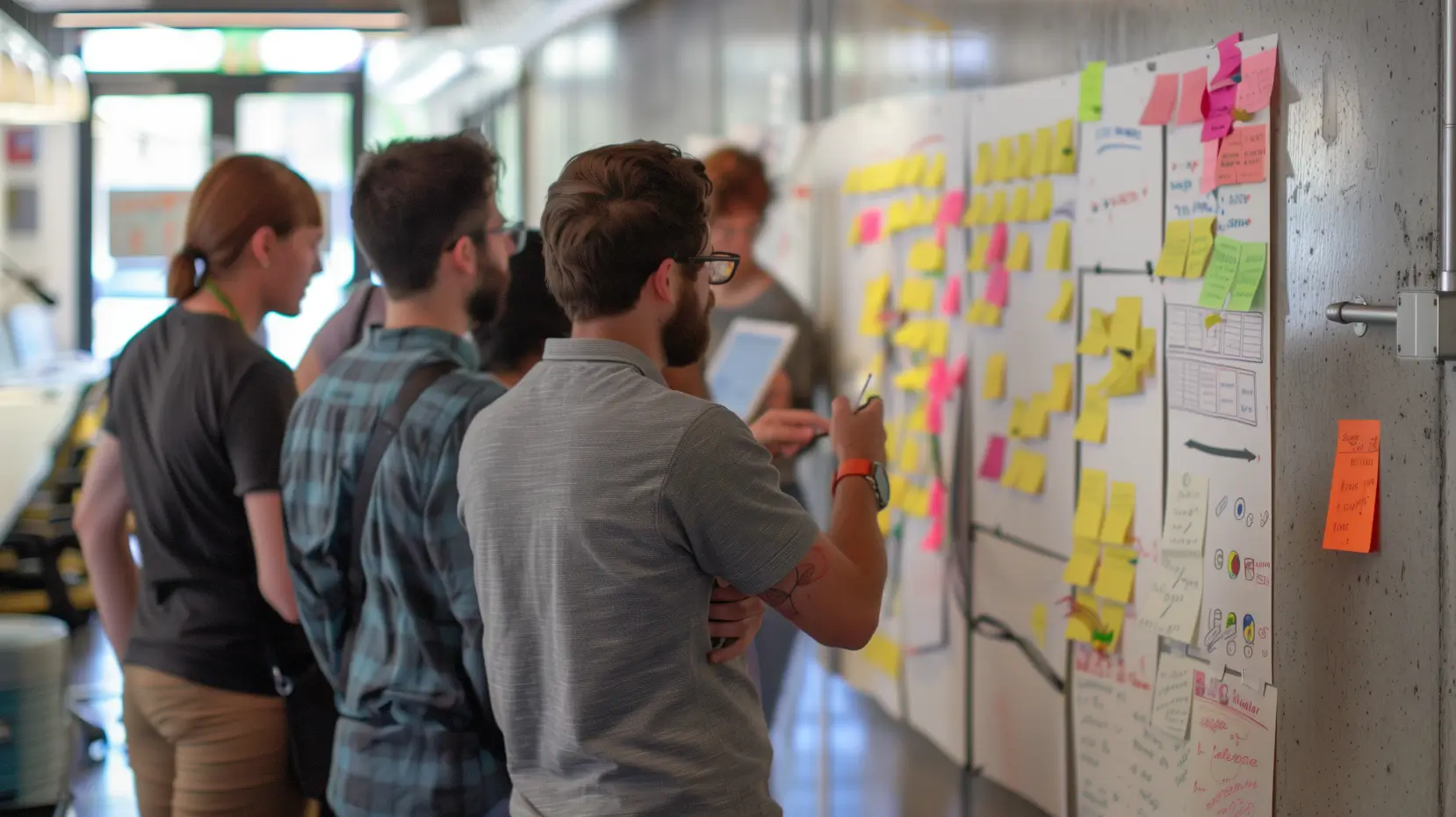
Teaching both inductive and deductive reasoning helps students recognize when they're making assumptions based on limited evidence or personal biases. By explicitly practicing logical thinking patterns, students learn to question their initial conclusions and seek additional evidence. This metacognitive awareness reduces confirmation bias, hasty generalizations, and other common thinking errors.
Effective reasoning plays a crucial role in decision-making and problem-solving, allowing individuals to navigate the complex landscape of cognitive biases. Cognitive biases are inherent, systematic errors in thinking that can lead to logical fallacies and flawed judgments. To counteract these biases, teachers can employ various strategies and techniques.
One effective strategy is awareness. By being conscious of the existence of cognitive biases, teachers can consciously monitor their own thinking and decision-making processes. This self-awareness helps in identifying biases as they arise, allowing for more objective and rational reasoning.
Another technique is diversifying perspectives. Encouraging students to consider different viewpoints fosters critical thinking skills and reduces the impact of biases. By presenting contrasting opinions, teachers can challenge biased thinking and promote open-mindedness.
Evidence-based decision-making is another important strategy. Teachers should encourage students to gather and evaluate reliable information before drawing conclusions. This technique helps to minimize the influence of biases by focusing on objective evidence rather than personal biases.

In addition to these strategies, teachers can also equip students with specific techniques to counteract common cognitive biases. A prime example is the confirmation bias, which is the tendency to seek out information that confirms pre-existing beliefs. To counter this bias, students can be taught to actively search for and consider evidence that contradicts their initial hypotheses.
Another common bias is the availability heuristic, where individuals base their judgments on easily remembered information. One possible technique to mitigate this bias is to encourage students to deliberately search for and consider alternative sources of information. This expands their knowledge base and reduces reliance on easily accessible but potentially limited information.
The framing effect is yet another example of a cognitive bias. It occurs when the presentation of information influences decision-making. By teaching students to reframe the problem or decision from different angles, teachers can help them overcome this bias and arrive at a more rational conclusion.
By using strategies such as awareness, diversifying perspectives, evidence-based decision-making, and specific techniques to counteract biases, teachers can empower students to think critically and make more informed decisions.

Essential resources include cognitive science textbooks on logical thinking development, educational psychology journals focusing on critical thinking pedagogy, and practical teaching guides with classroom-ready activities for both reasoning types. Professional development workshops and online courses specifically designed for educators offer hands-on strategies. Many educational websites provide free lesson plans and assessment tools for teaching reasoning skills.
Here are five studies that explore inductive and deductive reasoning and their usefulness in decision-making and learning processes, particularly in educational and workplace settings:
These studies collectively demonstrate the utility of inductive and deductive reasoning in enhancing decision-making and learning processes across educational and workplace settings, emphasizing the need for educational practices and professional development programs that support the development of these critical reasoning skills.
Inductive and deductive reasoning are the pillars of logical thought, essential in the critical thinking toolkit that teachers impart to their students. Understanding the nuances of these two forms of reasoning is pivotal in nurturing students' analytical capabilities.
| Aspect | Inductive Reasoning | Deductive Reasoning |
|---|---|---|
| Definition | A bottom-up approach that starts with specific instances and builds toward broader generalizations | A top-down approach that begins with general theories or premises and moves toward specific conclusions |
| Key Feature | Builds arguments piece by piece from observations, focusing on pattern recognition and probability | Provides certainty in conclusions through systematic, structured logical reasoning |
| Example | Observing multiple instances of plants growing toward light and concluding that plants need sunlight | Starting with the premise of traveling to a specific city and deducing the best transportation method |
| Classroom Use | Encourages students to spot patterns, form hypotheses, and engage in scientific exploration | Teaches students to evaluate hypothesis validity and understand sound argument structures |
| Best For | Tackling unfamiliar problems, creative exploration, and real-world application of learning | Verification of theories, formal inquiry, and situations requiring certain conclusions |
Inductive reasoning, a bottom-up approach, invites learners to start with specific instances and ascend to broader generalizations. It's a process where the inductive argument is built piece by piece from observations, culminating in a hypothesis. This inductive logic sparks curiosity, propelling students to discern patterns and engage in the scientific method with vigor.

Contrastingly, deductive reasoning adopts a top-down approach. Here, the argument in question begins with a widely accepted theory or premise, marching steadfastly towards individual, specific conclusions, forming a deductive argument. This form of reasoning teaches students to evaluate the validity of a hypothesis by empirical observation, sharpening their scientific reasoning and understanding of valid argument structures.

In daily classroom practice and everyday life, these methods interlace to form a robust framework for discovery and verification. While inductive arguments empower students with the creative freedom to explore and theorize, deductive arguments refine their thought processes, ensuring that their conclusions are sound or revealing the flaws in unsound or invalid arguments.
Introducing students to both approaches equips them with a comprehensive view of problem-solving and decision-making, enriching their educational journey with the rigors of formal and empirical inquiry.
Deductive reasoning is a top-down logical process that starts with a general theory or premise and moves to specific conclusions. It guarantees certainty when the initial premises are true, making it ideal for mathematical proofs and scientific hypothesis testing. Teachers use deductive reasoning when applying established rules or formulas to solve specific problems.

The concept of the Deductive Approach plays a crucial role in providing certainty in conclusions. Deduction involves reasoning from general or universal premises to reach specific conclusions. It is often used in everyday scenarios, such as trip planning, where we start with certain premises, such as knowing the destination and the available means of transportation, and then use deductive reasoning to determine the best route or mode of travel.
The Deductive Approach relies on the principles of logic and aims to ensure that the conclusion follows logically from the given premises. This approach provides certainty in conclusions because it involves a systematic and structured process of reasoning. When we use deduction, we start with premises that are known or assumed to be true, and then use logical reasoning to draw conclusions that are necessarily true if the premises are true.
For example, when planning a trip, we may have the premise that our destination is a specific city. We also know the available means of transportation, such as a car or a train. By using deductive reasoning, we can conclude that if we choose to travel by car, we will need to consider factors such as fuel costs, driving distance, and travel time. On the other hand, if we choose to travel by train, we may need to consider factors such as ticket availability, departure and arrival times, and the convenience of the station locations. The deductive approach allows us to reach these conclusions with certainty because they logically follow from the given premises and the principles of logic.

Common classroom examples include mathematical proofs (all triangles have 180 degrees, therefore this specific triangle has 180 degrees), scientific laws (all metals conduct electricity, copper is a metal, therefore copper conducts electricity), and grammar rules (all sentences need a subject and verb, this is a sentence, therefore it needs a subject and verb). These examples help students understand how general rules apply to specific cases. Teachers can use these patterns to demonstrate logical thinking across all subject areas.
Deductive reasoning is a logical process used to draw conclusions based on established premises and relationships. It always follows from general or universal premises, and there are three types of deductive reasoning based on the premise and relationships. To illustrate this, let's consider three examples of deductive reasoning.
Example 1: All birds have feathers. A penguin is a bird. Therefore, a penguin has feathers. In this example, the premise is that all birds have feathers, which is a general statement based on observations and knowledge. The relationship is that a penguin is classified as a bird. By applying deductive reasoning, we can conclude that a penguin has feathers because it falls under the category of birds, which are known to have feathers.
Example 2: All mammals have hair. A dog is a mammal. Therefore, a dog has hair. Here, the premise is that all mammals have hair, which is a universal statement. The relationship is that a dog is categorized as a mammal. By employing deductive reasoning, we can infer that a dog has hair because it is a mammal, and all mammals possess hair.
Example 3: All liquids evaporate at boiling point. Water is a liquid. Therefore, water will evaporate at its boiling point. In this instance, the premise states that all liquids evaporate at their boiling points, which is a general observation. The relationship is that water is classified as a liquid. Using deductive reasoning, we can deduce that water will evaporate at its boiling point because it is a liquid and all liquids follow this pattern.
In summary, deductive reasoning provides a rational way to draw conclusions based on premises and relationships. By following the logical structure of deductive reasoning, we can confidently make inferences and reach valid conclusions. These examples highlight the importance of understanding the premise and relationships when engaging in deductive reasoning.

Inductive reasoning works bottom-up, starting with specific observations to form general conclusions or theories based on patterns and probabilities. Unlike deductive reasoning's certainty, inductive conclusions are probable but not guaranteed, making it essential for scientific discovery and pattern recognition. Students use inductive reasoning when conducting experiments, analyzing data trends, or forming hypotheses from observations.
Inductive inquiry is another valuable approach that teachers can use to stimulate critical thinking and problem-solving in their students. It involves the examination of probabilities and patterns as a means of drawing conclusions and making generalizations.
By observing patterns in data or events, students are able to identify trends and relationships, allowing them to formulate theories or hypotheses. It is important to note, however, that inductive reasoning is not infallible, as generalizations made based on observed patterns may not always hold true. This is because the conclusions drawn from inductive reasoning are based on probabilities rather than certainties. Just because a pattern has been observed several times does not mean that it will continue to hold true in all instances.
Nevertheless, inductive reasoning is a valuable tool for establishing probability. Students learn to analyze and interpret data, make predictions based on observed patterns, and assess the likelihood of certain outcomes. This helps them to develop important critical thinking skills and become more comfortable with uncertainty and ambiguity.
By actively engaging in the process of inductive inquiry, students become active participants in their own learning, and are encouraged to question, reflect, and explore ideas in a systematic and logical manner. As teachers, it is important to support and guide students through the process, encouraging them to justify their reasoning and test their generalizations against new data or evidence.
In this way, we can foster a culture of inquiry and curiosity in our classrooms, enabling students to develop their own theories, draw conclusions, and build knowledge through their observations and experiences.
Students use inductive reasoning when observing that the sun rises every morning to conclude it will rise tomorrow, noticing that mixing blue and yellow paint repeatedly creates green to form a color theory, or surveying classmates' favorite foods to make generalizations about lunch preferences. These examples show how specific observations lead to broader conclusions. Teachers can encourage this thinking through science experiments, data collection activities, and pattern recognition exercises.
As we have seen, Inductive reasoning is a method where conclusions are drawn from observations, each serving as a minor premise contributing to a major premise. In contrast to deductive reasoning, which seeks to confirm a theory, inductive reasoning moves toward the creation of theories, often beginning with specifics and moving to generalizations.
This process is integral to everyday life, allowing us to make informed decisions based on patterns we observe. Here are three examples that illustrate how inductive reasoning is applied in various scenarios.
In each of these examples, the inductive argument starts with observed data points or minor premises to construct a probable, if not certain, major premise. By recognizing patterns and constructing verbal arguments rooted in logic, we can apply inductive reasoning to generate hypotheses, foster understanding, and innovate within various fields. This method embraces the reality that while a single argument may not be conclusive, it can lead us to powerful insights when viewed collectively.

Start by having students collect specific observations or data points, then guide them to identify patterns or similarities among these observations. Next, help students form a general hypothesis or theory based on the patterns, and finally test this theory with new examples. This framework mirrors the scientific method and builds critical thinking skills through hands-on discovery.
Inductive reasoning transforms observation into knowledge, a process crucial in educational settings. As teachers, guiding students through this framework not only enhances their learning but also empowers them with critical thinking skills. Here’s a simple, step-by-step method to teach inductive reasoning in the classroom.
By leading students through these steps, you'll help them to develop a robust understanding of inductive reasoning. This methodical approach to learning encourages them to think critically, observe carefully, and base their conclusions on solid evidence, which are vital skills in any field of study.

The seven essential principles include modeling both reasoning types explicitly, providing varied practice opportunities, encouraging students to explain their thinking process, using real-world examples, creating safe spaces for hypothesis testing, teaching pattern recognition skills, and regularly assessing reasoning development. These principles work together to build strong logical thinking abilities. Implementation should be gradual and consistent across all subject areas.
Developing reasoning skills in the classroom is of utmost importance for the students' overall learning experience. By establishing and implementing the 7 Principles of Developing Reasoning, teachers can effectively nurture critical thinking and problem-solving abilities in their students.
1. First and foremost, these principles emphasize the significance of providing students with opportunities to think independently and critically. This involves encouraging them to question assumptions, analyze evidence, and evaluate arguments. By promoting these skills, students are better equipped to engage in thoughtful discussions and make informed decisions.
2. The second principle revolves around the importance of fostering a supportive and inclusive classroom atmosphere. Creating a safe space where students feel comfortable expressing their thoughts and ideas allows for open-minded dialogue and collaboration. Through this principle, teachers can cultivate an environment that values diverse perspectives and encourages students to consider alternative viewpoints.
3. The third principle highlights the necessity of scaffolding and incremental learning. It is essential to provide students with structured support and guidance as they develop their reasoning skills. This can be achieved through gradual release of responsibility where teachers gradually release control to students, allowing them to take ownership of their learning.
4. Another crucial principle is the incorporation of real-world examples and authentic tasks. By connecting abstract concepts to practical applications, students can develop a deeper understanding of the material and its relevance in their lives. This principle encourages teachers to provide students with opportunities to apply their reasoning skills in authentic contexts, fostering a sense of purpose and engagement.

5. The fifth principle focuses on promoting metacognition and reflection. Teachers should encourage students to think about their own thinking processes, allowing them to monitor their progress and identify areas for improvement. By fostering metacognitive skills, students can enhance their ability to reason effectively and become self-directed learners.
6. The sixth principle is centered around formative assessment and feedback. Regularly assessing students' progress through low-stakes assessments helps teachers to identify areas where students may be struggling and provide targeted support. Additionally, providing timely and constructive feedback allows students to reflect on their reasoning and make necessary adjustments, ultimately improving their overall learning experience.
7. The final principle emphasizes the importance of collaboration and peer interaction. By engaging in meaningful group work, students have the opportunity to learn from and with their peers. Collaborative activities encourage students to articulate their reasoning, strengthen their arguments, and consider alternative viewpoints, promoting a deeper understanding of the material.
By implementing these principles, teachers can create an inclusive and supportive environment where students feel empowered to think independently, reflect on their reasoning, and engage in meaningful discussions. Developing reasoning skills not only benefits students in their current academic pursuits but also equips them with essential lifelong skills for success in various contexts.

Teaching both inductive and deductive reasoning helps students recognize when they're making assumptions based on limited evidence or personal biases. By explicitly practicing logical thinking patterns, students learn to question their initial conclusions and seek additional evidence. This metacognitive awareness reduces confirmation bias, hasty generalizations, and other common thinking errors.
Effective reasoning plays a crucial role in decision-making and problem-solving, allowing individuals to navigate the complex landscape of cognitive biases. Cognitive biases are inherent, systematic errors in thinking that can lead to logical fallacies and flawed judgments. To counteract these biases, teachers can employ various strategies and techniques.
One effective strategy is awareness. By being conscious of the existence of cognitive biases, teachers can consciously monitor their own thinking and decision-making processes. This self-awareness helps in identifying biases as they arise, allowing for more objective and rational reasoning.
Another technique is diversifying perspectives. Encouraging students to consider different viewpoints fosters critical thinking skills and reduces the impact of biases. By presenting contrasting opinions, teachers can challenge biased thinking and promote open-mindedness.
Evidence-based decision-making is another important strategy. Teachers should encourage students to gather and evaluate reliable information before drawing conclusions. This technique helps to minimize the influence of biases by focusing on objective evidence rather than personal biases.

In addition to these strategies, teachers can also equip students with specific techniques to counteract common cognitive biases. A prime example is the confirmation bias, which is the tendency to seek out information that confirms pre-existing beliefs. To counter this bias, students can be taught to actively search for and consider evidence that contradicts their initial hypotheses.
Another common bias is the availability heuristic, where individuals base their judgments on easily remembered information. One possible technique to mitigate this bias is to encourage students to deliberately search for and consider alternative sources of information. This expands their knowledge base and reduces reliance on easily accessible but potentially limited information.
The framing effect is yet another example of a cognitive bias. It occurs when the presentation of information influences decision-making. By teaching students to reframe the problem or decision from different angles, teachers can help them overcome this bias and arrive at a more rational conclusion.
By using strategies such as awareness, diversifying perspectives, evidence-based decision-making, and specific techniques to counteract biases, teachers can empower students to think critically and make more informed decisions.

Essential resources include cognitive science textbooks on logical thinking development, educational psychology journals focusing on critical thinking pedagogy, and practical teaching guides with classroom-ready activities for both reasoning types. Professional development workshops and online courses specifically designed for educators offer hands-on strategies. Many educational websites provide free lesson plans and assessment tools for teaching reasoning skills.
Here are five studies that explore inductive and deductive reasoning and their usefulness in decision-making and learning processes, particularly in educational and workplace settings:
These studies collectively demonstrate the utility of inductive and deductive reasoning in enhancing decision-making and learning processes across educational and workplace settings, emphasizing the need for educational practices and professional development programs that support the development of these critical reasoning skills.